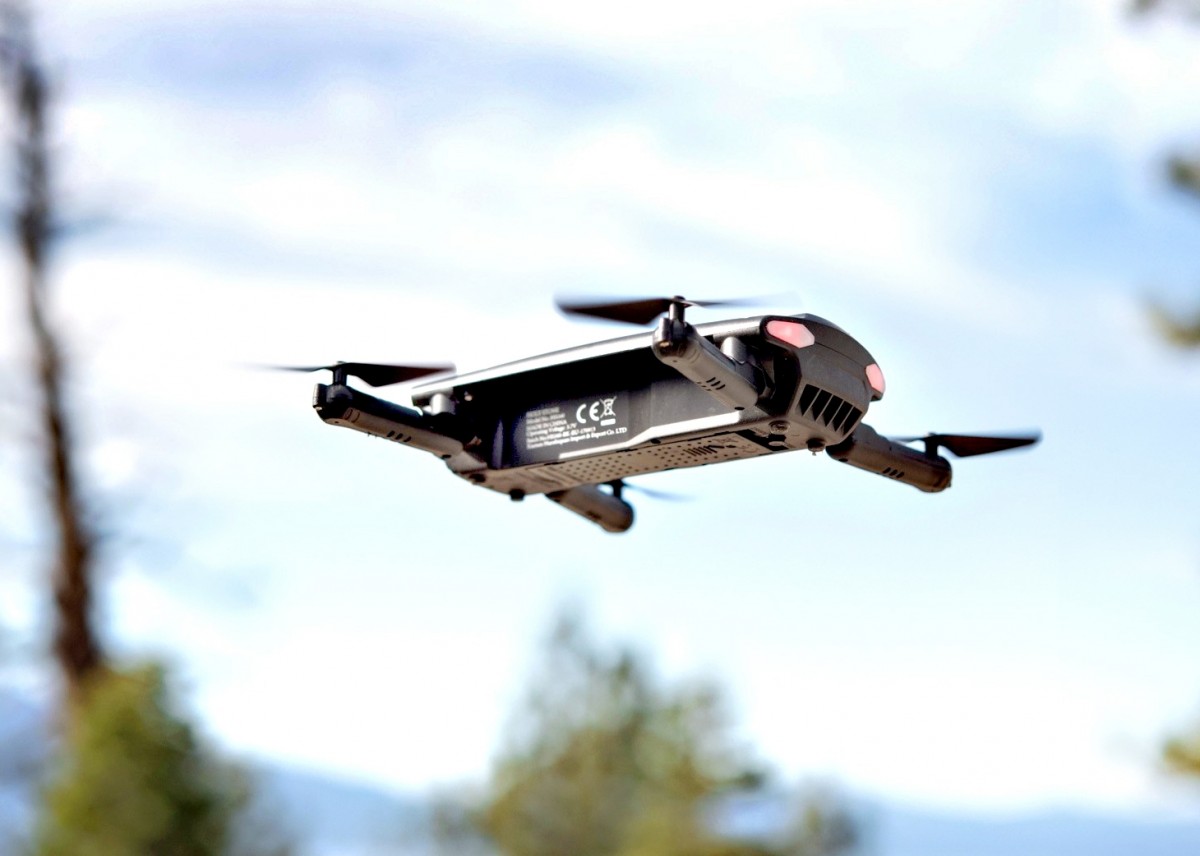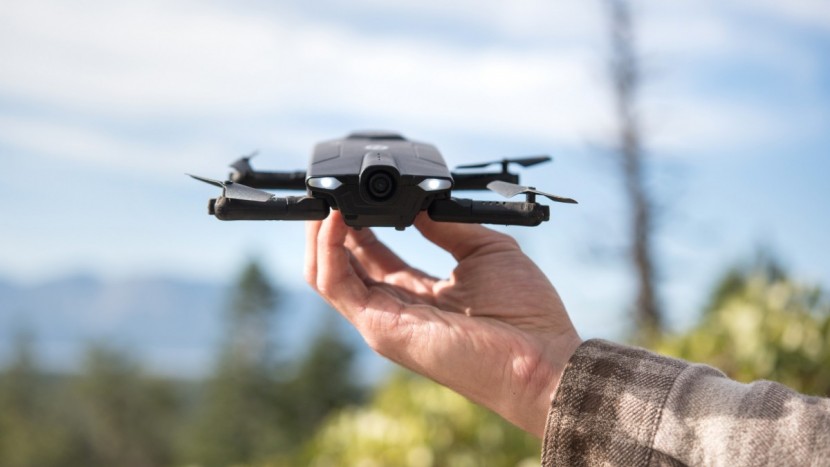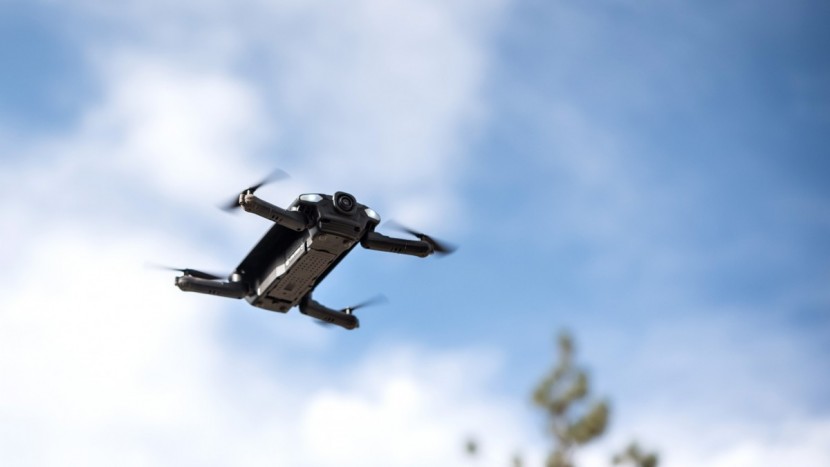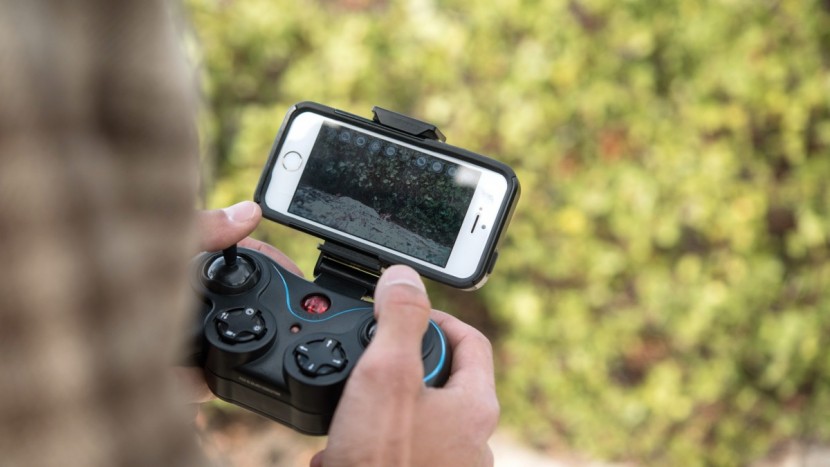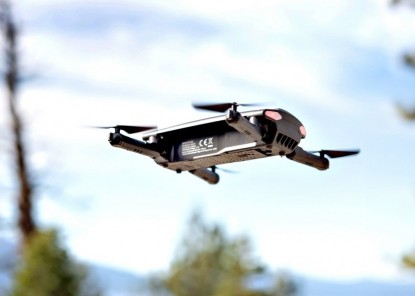
Our Verdict
Our Analysis and Test Results
After spending three days flying, crashing, and making videos with the Shadow, we were impressed overall, but definitely felt that it had a couple of shortcomings. Below we further describe its performance in all of the different tests we conducted.
Flight Performance
The Good
If we were to describe the Shadow's flight performance in a few words, we would go with, “Acceptable, but not exceptional.” In general its flight is a bit more stable and easier to control than that of the DBPower X400W FPV. That's not to say that it's perfect, like all models in this price range it doesn't have any sensors that can lock it into a stable hover, so you'll constantly be knocking the joysticks around to keep it where you want it. However, the joysticks seem to be a bit more friendly towards sudden movements than other models, so a panicked overcorrection won't send it careening into a tree. We also found the manufacturer's claim of 8 minutes of flight time per battery to be quite accurate. The drone also comes with a spare battery, so you can get 16 minutes of fun before needing to find an outlet.
The Bad
The biggest downside of the Shadow's flight is its power, or lack thereof. In our testing it was easily moved about by any slight breeze, even when we were actively trying to fly against it. Bottom line, we wouldn't fly this drone on anything but a very calm day. It also does not have a headless flight mode, which we don't feel is a huge downside, but some beginners like to start out flying in this more intuitive flight mode.
Video Quality
The Shadow's video quality is quite impressive given its price range. The camera produces footage that looks fairly clear. Not quite as clear as the '720P HD camera' marketing claims would lead you to believe, but clear enough that you can watch it on a 13" computer screen without too much pixelation. The video is also much more stable than anything we could capture with the likes of the DBPower X400W FPV. That's not to say it is without its faults. We did experience some instances where the captured video inadvertently cut out for a second or two, as you can see in the sample footage below, but it was less guilty of these glitches than other models we tested.
The video the Shadow produces is good when you consider that it only cost $90, but it's still not great. This clip is from one continuous flight and the breaks in the recording are not intentional.
Video Downlink
This is where the Shadow lost some serious brownie points. No matter what setting we adjusted the Shadow's downlink always lagged enough that it was almost useless. We couldn't frame any shots using the downlink because it was too far removed from real time, which led us to do all of our flying by looking directly at the drone at all times. You can still get some decent shots this way, but it takes a bit more guesswork. The DBPower X400W FPV has a better video downlink, but you get it at the cost of overall video quality.
Other Considerations
The Shadow is also compatible with many first-person view (FPV) goggles that allow for an almost virtual reality experience that will make you feel like you're sitting in the cockpit of the drone. We did not test this feature, but our problems with the Shadow's video downlink gives us doubts about how well the Shadow would work with FPV goggles.
Conclusion
The Holy Stone HS160 Shadow offers some decent footage for an inexpensive drone, but lacks a good video downlink and can easily be blown around in the air. This makes it good if you want to get some unimpressive aerial video at a low price, but makes it a poor stepping stone if you're looking to do a trial run before upgrading to a high-end camera drone. The much more responsive video downlink of the DBPower X400W FPV makes it a better training drone if you aspire to upgrade at some point, even though its video quality is not as good.


